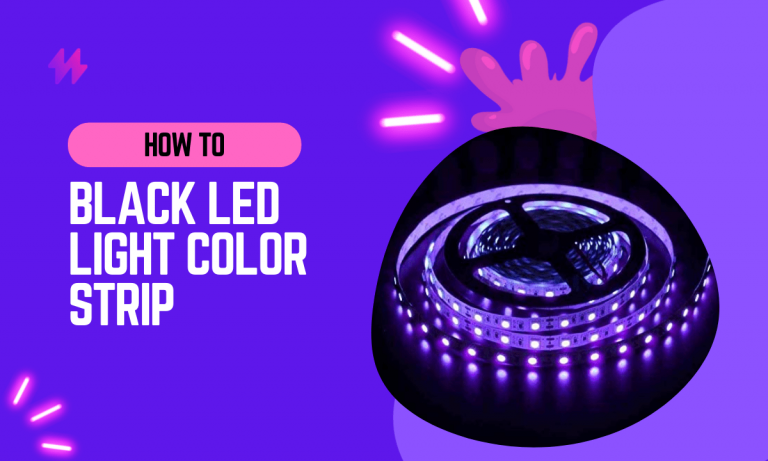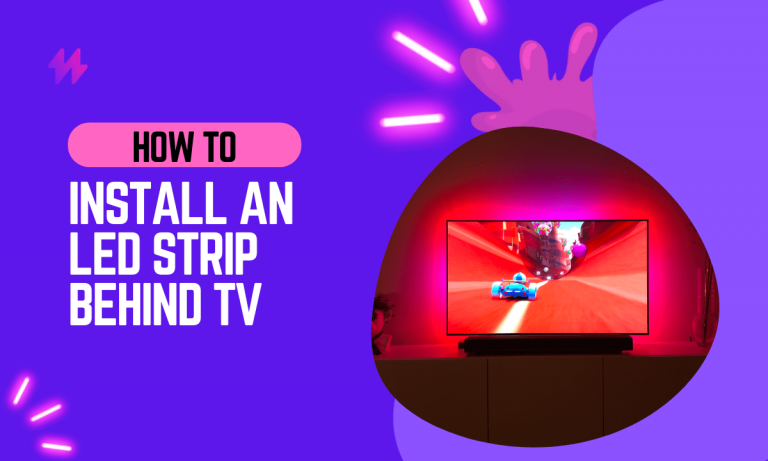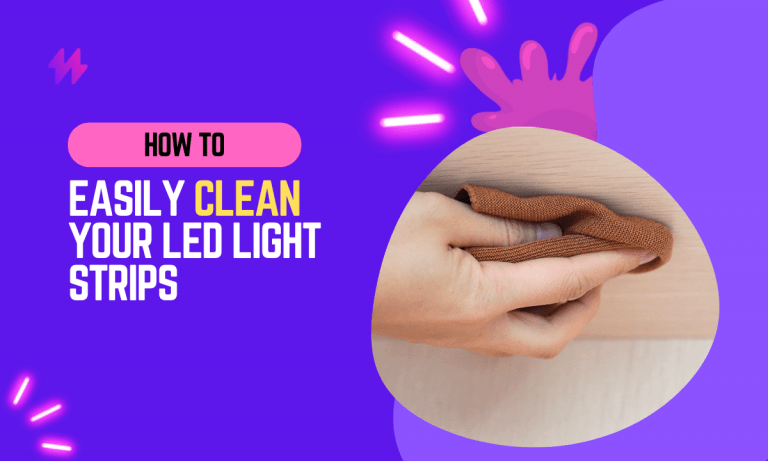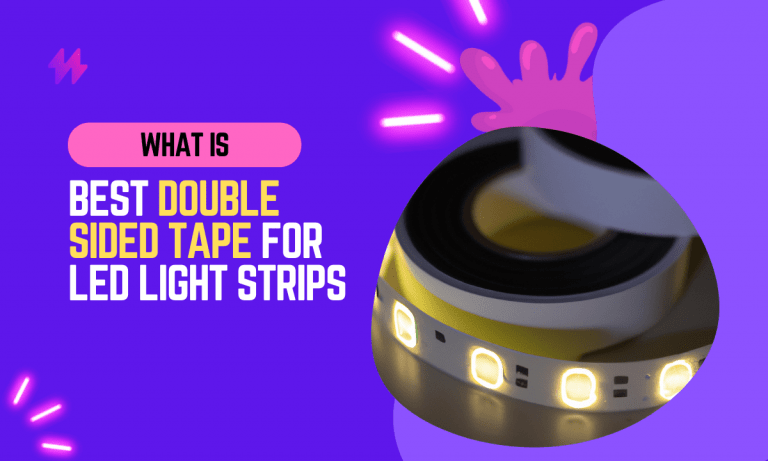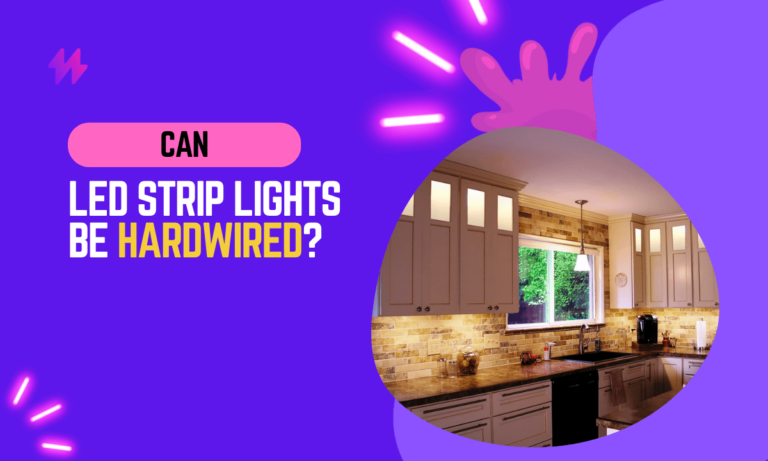How To Sync LED Strip With TV For Backlight?
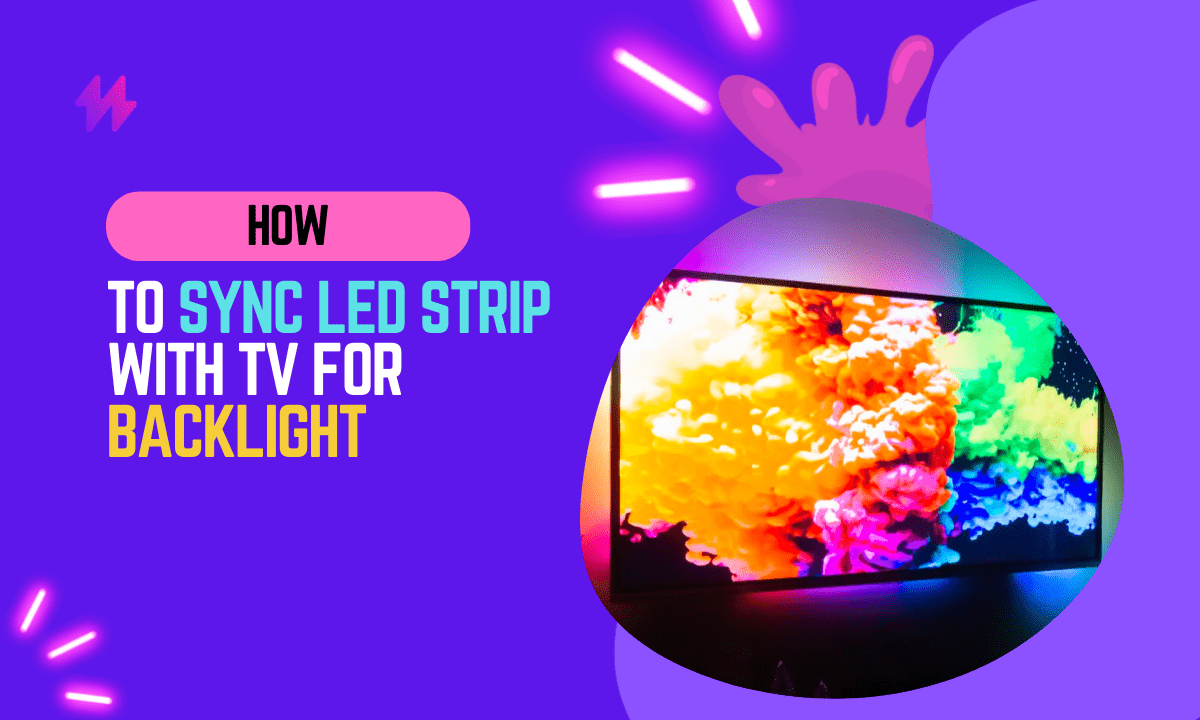
In the ever-evolving realm of home entertainment, the quest for an immersive viewing experience has LED enthusiasts to explore innovative technologies that extend beyond the boundaries of the television screen. One such transformative enhancement that has gained immense popularity is the synchronization of lights with your TV.
Imagine a cinematic scene where the ambient lighting in your living room mirrors the hues and intensity of the on-screen action, creating a captivating symphony of visuals that extends beyond the confines of the TV. This is the magic of syncing lights with your TV—an artful fusion of technology and ambiance.
Syncing lights with your TV is not merely a technical endeavor; it’s an artistic expression that elevates your entertainment space to new heights. Whether you’re watching a thrilling action movie, immersing yourself in a video game adventure, or enjoying a relaxing evening with your favorite show, synchronized lighting adds a layer of depth and atmosphere that transcends traditional viewing.
The Impact on Viewing Experience
The benefits of syncing lights with your TV are not only visual but also experiential. Picture yourself surrounded by a cascade of colors that react dynamically to the content on your screen, enhancing immersion and engaging your senses in a way that traditional static lighting cannot. Beyond the aesthetic appeal, syncing lights with your TV can also contribute to reduced eye strain, creating a more comfortable and enjoyable viewing environment.
In this post, we’ll explore various methods on how to sync LED strips with your TV music and videos, from the advanced technology of HDMI Sync to the versatility of smart bulbs and DIY solutions. Whether you’re a tech enthusiast looking for cutting-edge solutions or a creative soul seeking a hands-on approach, there’s a method for everyone to embark on this journey of harmonizing lights with entertainment.
Also read: How to Install LED Lights Behind TV?
Benefits of Syncing Lights with Your TV
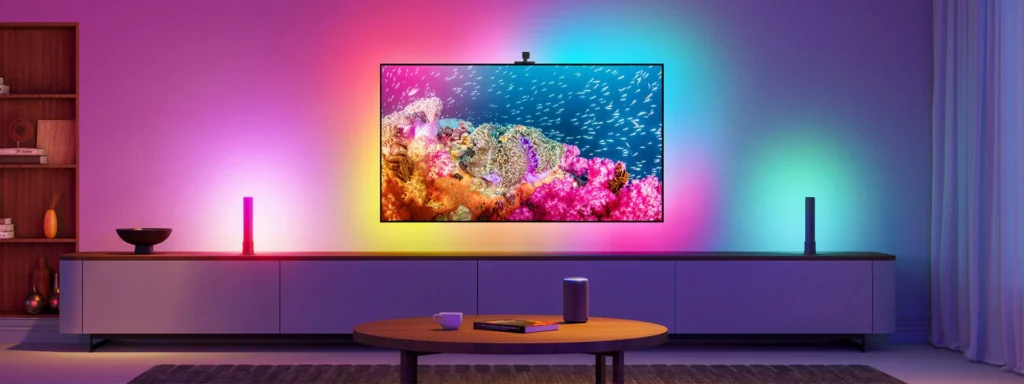
Synchronizing lights with your TV is not just a technological novelty; it’s a transformative addition to your home entertainment setup that brings a multitude of benefits. Beyond the visual spectacle, the dynamic interplay of lights with on-screen content contributes to an enhanced and immersive viewing experience. Let’s explore the various advantages of incorporating light synchronization into your entertainment space.
Immersive Atmosphere
Synced lights create an immersive atmosphere that extends the visual experience beyond the screen. Whether you’re in the midst of an intense movie scene, navigating a virtual gaming world, or enjoying a cozy evening with your favorite TV show, ambient lighting becomes an integral part of the narrative, intensifying emotions and enveloping you in the content.
Reduced Eye Strain
Traditional static lighting can sometimes cause eye strain, especially during extended viewing sessions. Syncing lights with your TV allows for dynamic adjustments in brightness and color temperature, providing a more comfortable and eye-friendly environment. This adaptability reduces eye strain, making your viewing experience more enjoyable and conducive to extended periods of entertainment.
Enhanced Visual Comfort
The ability to customize the lighting to complement different types of content enhances overall visual comfort. For example, during movie nights, the ambient lighting can dim and adopt warm tones, creating a cozy and cinematic feel. For gaming, vibrant and dynamic colors can add excitement, aligning with the fast-paced action on the screen. This level of customization ensures that your lighting enhances, rather than distracts from, the content you’re enjoying.
Thematic Ambiance
Syncing lights with your TV enables you to establish a thematic ambiance according to the genre or mood of the content. Whether it’s the pulsating hues of an action sequence, the calming tones of a nature documentary, or the suspenseful shadows of a thriller, the synchronized lights contribute to the overall mood lighting, making each viewing experience a tailored and memorable event.
Entertainment Beyond the Screen
Your living room ceases to be just a viewing space; it becomes an interactive and participatory environment. Synced lights turn your entertainment setup into a dynamic canvas that reacts in real time to the content on your TV. This creates an engaging synergy between your senses and the visuals, fostering a deeper connection with the entertainment unfolding before you.
Social and Gaming Enhancements
For social gatherings or gaming nights, syncing lights can elevate the experience for everyone involved. Multiplayer games become more thrilling as the lights respond to in-game events and social events are accentuated with dynamic lighting that complements the mood of the gathering. It’s a feature that turns ordinary moments into extraordinary shared experiences.
How to Setup a HDMI Sync LED Strip for TV backlight?
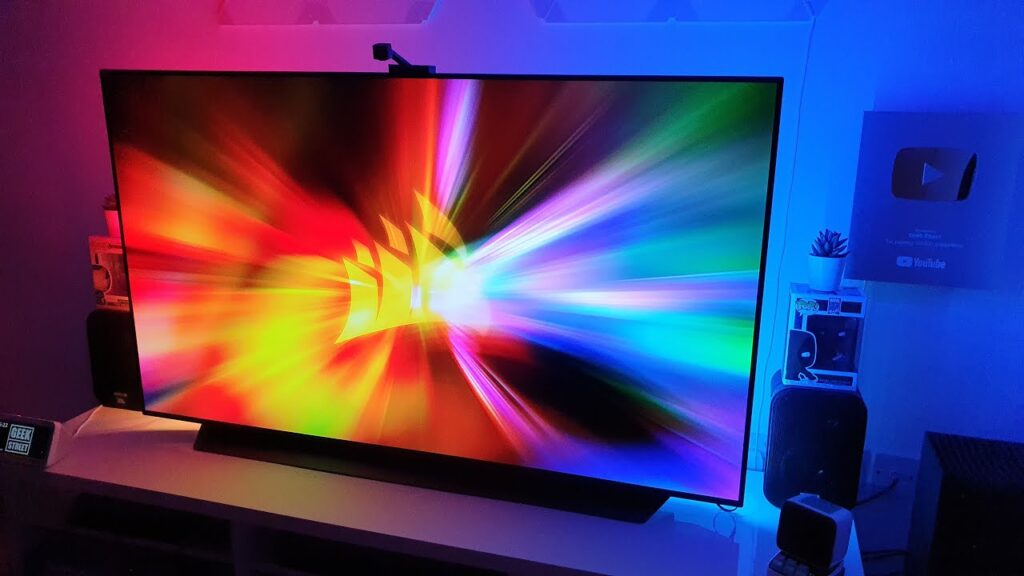
HDMI Sync technology offers a sophisticated and immersive way to synchronize your lights with the content on your TV screen. This section will guide you through the step-by-step process of setting up HDMI Sync, ensuring that you can seamlessly integrate this technology into your home entertainment system for a truly captivating viewing experience.
Equipment Needed
Connecting the HDMI Sync Device
- Identify HDMI Ports: Locate the HDMI ports on both your TV and the HDMI Sync device. Typically, HDMI ports on your TV are labeled, and you may need to use an available HDMI port on your HDMI Sync device.
- Connect HDMI Cables: Use high-quality HDMI cables to connect your media sources to the HDMI Sync device’s input ports. Connect the HDMI Sync device’s output port to an available HDMI port on your TV.
- Power Up the HDMI Sync Device: Plug the HDMI Sync device into a power source. Ensure that it’s powered on and ready for configuration.
Video Tutorial: https://www.youtube.com/watch?v=H8MlZ3wT67w
Configuring HDMI Sync Settings
- Access Device Settings: Navigate to the settings menu on your HDMI Sync device. This can usually be done through a remote control or a smartphone app provided by the manufacturer.
- Calibration and Setup: Follow the on-screen instructions to calibrate the HDMI Sync device. This often involves configuring the placement of your lights and specifying the positioning of the TV in relation to your seating area.
- Selecting Entertainment Area: Define the area where you want the synchronized lighting effect. This helps the device understand the spatial dimensions for optimal color coordination.
- Testing the Setup: Use the built-in test features to ensure that the lights are syncing correctly with the on-screen content. Adjust settings as needed to achieve the desired effect.
Frequently Asked Questions
Q: What types of lights can be synced with a TV?
A: Various lights can be synced with a TV, including smart bulbs (e.g., Philips Hue, LIFX), LED strips, and dedicated HDMI Sync systems. The choice depends on personal preferences, compatibility with your TV, and the desired lighting effects.
Q: Do I need special equipment to sync lights with my TV?
A: Yes, you’ll need compatible lighting equipment, such as smart bulbs, LED strips, or a dedicated HDMI Sync system. Additionally, HDMI cables are required for HDMI Sync setups. Make sure the chosen lights and devices are compatible with your TV.
Q: Can I sync lights with any TV?
A: Most modern TVs can be paired with compatible lighting systems. However, it’s essential to check the specifications of both your TV and the chosen lights to ensure compatibility. Some advanced features, like HDMI Sync, may have specific requirements.
Q: Can I sync lights with streaming content on my smart TV?
A: Yes, most syncing systems can work with streaming content on smart TVs. HDMI Sync, in particular, responds to the video signal, allowing for dynamic synchronization with movies, TV shows, and other streaming content.
Q: Can I sync lights with my TV without using HDMI?
A: Yes, you can use alternative methods, such as smart bulbs and LED strips that connect to your TV via Wi-Fi or Bluetooth. However, HDMI Sync technology provides a more direct and real-time synchronization for a seamless experience.
Final Words
In conclusion, synchronizing LED strip lights with a TV for backlighting not only enhances the visual appeal of your entertainment setup but also improves the viewing experience by reducing eye strain and increasing perceived image clarity. This technique, known as bias lighting, involves carefully placing LED strips behind the TV screen to provide a soft glow that contrasts with the brightness of the screen. The key to effective synchronization lies in selecting LED strips that can be easily connected to the TV and controlled, either through smart home systems, remote controls, or directly via apps that adjust the color and brightness based on the content displayed on the screen. Ensuring that the LEDs have the capability to match the dynamic range of the TV’s display is crucial for achieving a seamless and responsive lighting effect that enhances, rather than distracts from, the viewing experience.
Furthermore, the process of syncing LED strips with a TV requires attention to the setup details to maximize the benefits. The color temperature of the LED lights should ideally be neutral or slightly warm to avoid casting unnatural colors onto the screen, which can alter the perception of the display. Additionally, installing the lights uniformly and at the correct distance from the back of the TV ensures an even spread of light, avoiding hotspots and shadows that could impair the viewing experience. With advancements in LED technology and the increasing integration of smart home devices, the options for customizing and automating this setup are expanding, making it accessible to a wider audience. By enhancing the ambiance and reducing the harshness of bright screens in dark rooms, synchronized LED backlights can significantly elevate your home entertainment system, making your viewing sessions more enjoyable and comfortable.
So, as you embark on this illuminating journey, let your living room become a canvas of light and color, responding in real-time to the stories unfolding on your TV screen. Whether you’re a movie enthusiast, a dedicated gamer, or someone who simply appreciates the beauty of immersive visuals, the synchronized lights will elevate your viewing experience to new heights.

